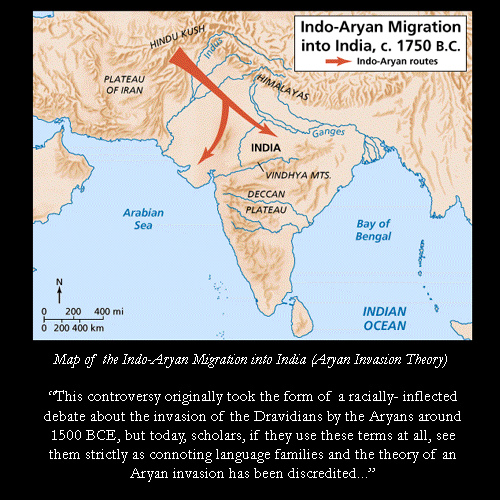by RAZIB KHAN

A long post at my other blog, The Maturation Of The South Asian Genetic Landscape, a reflection on the important preprint The Genomic Formation of South and Central Asia. Shorter:
- The original inhabitants of the Indian subcontinent who descent from the “out of Africa” migration separated very quickly, ~50,000 years ago, from other eastern populations (East Asians, Andaman Islanders, Papuans, etc.). These are the “Ancient Ancestral South Indians” (AASI).
- Agriculturalists from what is today Iran seem to have entered and mixed with the AASI in the Indus Valley earlier than 5,000 years ago, and possibly as early as 9,000 years ago. The only samples they have are from extra-Indian sites, in Central Asia and eastern Iran, as outlier individuals. They call these “Indus_Periphery” (I call then InPe).
- The “Ancestral South Indians” (ASI) were created from a mixing of InPe with AASI still extant in much of South Asia ~4,000 years ago.
- Between ~4,000 and ~3,200 years ago populations from the steppe arrive, carrying admixture from Iranian farmers, as well as people from the steppe (Andronovo-Sintashta?). They mix with the ASI population, though a few groups, such as the Kalash, mix directly with InPe, and create unmixed “Ancestral North Indian” (ANI).
- Subsequent mixing between ASI and ANI populations in various fractions accounts for most of the variation in South Asia.
- Some groups are enriched for “steppe” as opposed to the Iranian agriculturalist that first came with InPe. In particular, Brahmins. The hypothesis then is differential ancestry of Indo-Aryan heritage persists to this day.
- The Munda of northeast India have a somewhat different origin, mixing Southeast Asian ancestry with ASI and further AASI. The fact that unmixed AASI were present in South Asia indicates that the Munda arrived before the full mixture was complete. Though Austro-Asiatic expansion into northern Vietnam dates to ~4,000 BC, so I think it can’t be that early.
Things I now think are unlikely:
- Indo-Aryan interpenetration with non-Indo-Aryans in the IVC before 4,000 years ago (I was somewhat agnostic on this). The date for migration now seem very close to the “Classical Model” of arrival around 1500 BC.
- The AASI is very diverged from the Onge, who form a clade with mainland Southeast Asian Negritos. I now think it is likely that the AASI were primal, and not migrants from Southeast Asia.
Brown Pundits for more
